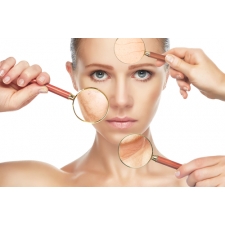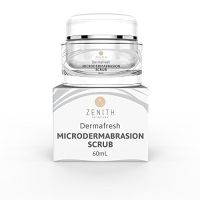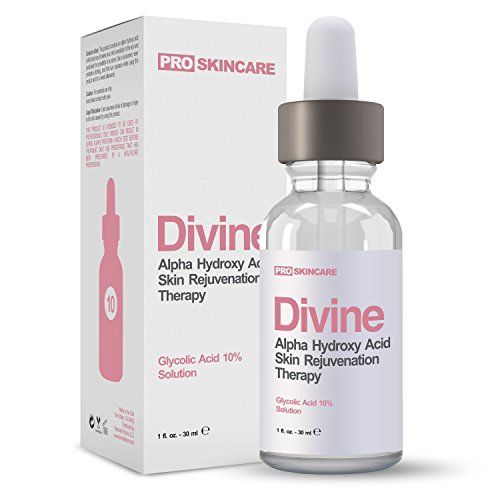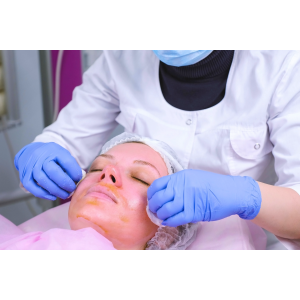A plethora of treatment options exist for managing acne scars. Combinations of therapies tend to work better than singular methods. Here is an overview of the safest, most effective treatments currently available.

Dermabrasion
Dermabrasion is one of the oldest treatments for acne scars and pits, with abrasive techniques being used successfully since the early 1950’s.1 While treatments originally consisted of rough abrasion with sandpaper, you can now use techniques that are finer and less uncomfortable. Dermabrasion works by removing the top layer of your skin, the epidermis, and sometimes a bit of the underlying living dermis layer, on areas where there are scars. This stimulates your skin to regrow and to create more elastic collagen fibers, thickening and smoothing out your skin. For deeper scars or a quicker treatment, you will need to visit a dermatologist to have the procedure done. Your skin will be numbed during the procedure, which only takes a few minutes. The dermatologist will use a small hand-held rotary device that rubs the top layer of skin off. With this type of dermabrasion, you may experience skin soreness and redness afterwards for a few days.2,3

Microdermabrasion - Lots of Treatments Needed to See Scar Removal
Microdermabrasion follows the same principle as dermabrasion, but on a much lighter level. You can visit a dermatologist to have your skin lightly sanded with microdermabrasion tools or have it done at a spa. It is also something you can do on your own at home using certain skin-care products. Some microdermabrasion machines are available for home-use, and some facial scrubs contain exfoliating ingredients which can accomplish the same task. This is an appealing option over standard dermabrasion because it is typically painless and does not require any downtime. However, microdermabrasion is not effective for deeper scars, and takes multiple rounds of treatment before its effects become noticeable.4 Another thing to watch out for is the presence of plastic microbeads in some facial scrubs; if the ingredients list polyethylene, polypropylene, polymethyl methacrylate, polylactic acid, or nylon, that indicates plastic beads in the product.

Chemical Peels - Okay Results with Downtime
Chemical peels work in a similar way to dermabrasive techniques, but use chemicals rather than mechanical force to remove the epidermis in affected skin. With specific types and concentrations of acids, dead and damaged skin in the epidermis is removed, taking with it some skin lesions. You can use superficial peels at home for smoothing your skin and healing minor scars. The most commonly-used substances for chemical peels are salicylic acid, glycolic acid, pyruvic acid, lactic acid, mandelic acid, Jessner solution, trichloroacetic acid, and phenol.5
Deeper peels may be performed by doctors to treat deeper scars, though these come with increased risks of cardiovascular and other adverse events, and may cause hyperpigmentation in your skin.4 Combinations of different chemicals are more effective at removing scars and are associated with fewer side effects. For very deep scars, doctors may use a technique called CROSS (chemical reconstruction of skin scars). This uses 70-100% trichloroacetic acid in a highly focal point to remove deeper sections of skin and promote greater skin thickening and collagen production.4,6

Laser Scar Removal - Good Results With Downtime
Along with hair and tattoos, lasers have been increasingly used to remove scar tissue. Today there are many varieties of lasers and techniques which may be used, depending on the type and severity of your scarring. Lasers are capable of delivering highly-targeted energy to specific points in your skin. The thermal energy they deliver stimulates your skin cells to produce more collagen and elastin, making your skin in the area stronger, smoother, and more hydrated.7 The main drawbacks for laser scar removal are that it requires you to be treated in a clinic, and you may experience skin discomfort and redness for a period afterward; however, laser treatments are one of the most effective methods for reducing acne scars.3
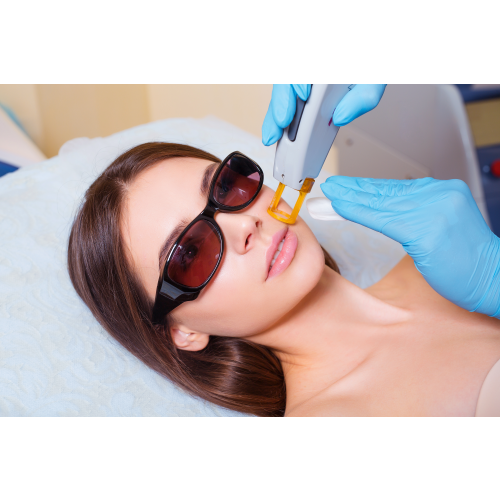

Injections and Needling - The Quickest & Best Results
There are a few other techniques for acne scar removal that may be performed by a dermatologist or other specialist. Since skin cells are held together in large part by tough, flexible collagen proteins, collagen injections have been tested for improving skin quality.8 Injection of platelet-rich plasma (PRP), using your own blood cells, has also been used to stimulate collagen deposition.9 Even the physical act of injecting a hypodermic needle into the skin has been found to break down fibrous tissue in scars and stimulate skin cells to secrete growth factors. Thus, insertion of dry needles into affected skin in a specific manner, in procedures called “needling” or “subcision,” are also effective methods for stimulating healthy skin growth and scar elimination.10 These injection-based procedures have all proven to be fairly safe with minimal adverse effects.
For Best Results: The Quickest Solution with the most results would be Sculptra or Hyaluronic acid injections which cost $1000 a treatment. These are performed at plastic surgery or dermatology offices. They really work!
At Home Solution: For a lot less money, but gradual results over time, try a home microneedling dermaroller.
There are a few other techniques for acne scar removal that may be performed by a dermatologist or other specialist. Since skin cells are held together in large part by tough, flexible collagen proteins, collagen injections have been tested for improving skin quality.8 Injection of platelet-rich plasma (PRP), using your own blood cells, has also been used to stimulate collagen deposition.9 Even the physical act of injecting a hypodermic needle into the skin has been found to break down fibrous tissue in scars and stimulate skin cells to secrete growth factors. Thus, insertion of dry needles into affected skin in a specific manner, in procedures called “needling” or “subcision,” are also effective methods for stimulating healthy skin growth and scar elimination.10 These injection-based procedures have all proven to be fairly safe with minimal adverse effects.
For Best Results: The Quickest Solution with the most results would be Sculptra or Hyaluronic acid injections which cost $1000 a treatment. These are performed at plastic surgery or dermatology offices. They really work!
At Home Solution: For a lot less money, but gradual results over time, try a home microneedling dermaroller.
[1] Mc EW. Treatment of acne pits by abrasion with sandpaper. Journal of the American Medical Association. 1950;142(9):647.Proceedings of the National Academy of Sciences of the United States of America.1920;6(7):423-426a
2.Eller JJ. Acne and acne scars; management of disease and removal of scars by high speed rotary abrasives. Ciba clinical symposia. 1955;7(1):25-31..
3.Bhargava S, Cunha PR, Lee J, Kroumpouzos G. Acne Scarring Management: Systematic Review and Evaluation of the Evidence. American journal of clinical dermatology. 2018.
4.Kravvas G, Al-Niaimi F. A systematic review of treatments for acne scarring. Part 1: Non-energy- based techniques. Scars, burns & healing. 2017;3:2059513117695312.The American journal of clinical nutrition.2014;100(4):1075-1084.
5.Kontochristopoulos G, Platsidaki E. Chemical peels in active acne and acne scars. Clinics in dermatology. 2017;35(2):179-182.Beneficial microbes.2018;9(1):51-60.

